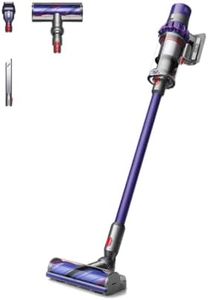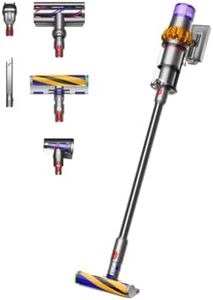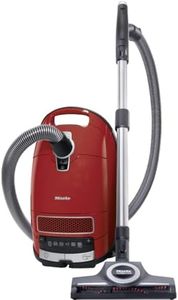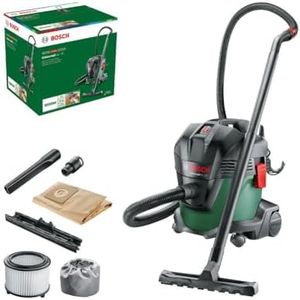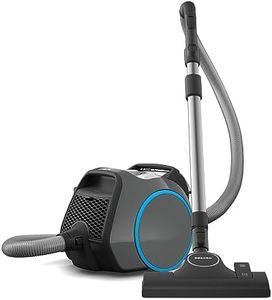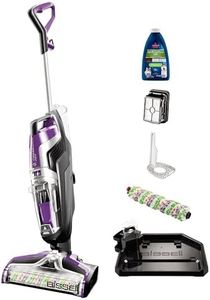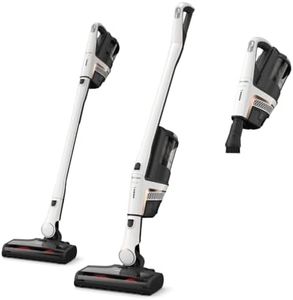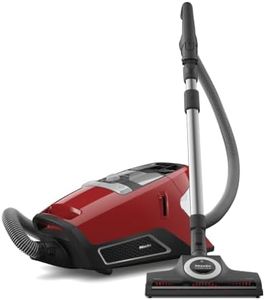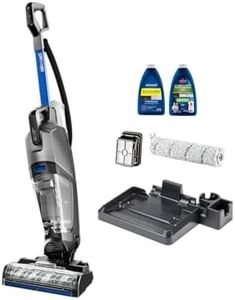We Use CookiesWe use cookies to enhance the security, performance,
functionality and for analytical and promotional activities. By continuing to browse this site you
are agreeing to our privacy policy
10 Best Allergy Vacuums
From leading brands and best sellers available on the web.Buying Guide for the Best Allergy Vacuums
Choosing the right vacuum cleaner when you have allergies is much more than just picking a machine that looks good or seems powerful. People with allergies need to focus on features that actually help reduce allergens in the air and on surfaces, like dust mites, pollen, pet dander, and mold spores. The goal is not only to clean floors but also to stop the vacuum from releasing these tiny particles back into the air, where they can make symptoms worse. Understanding specific features and how they impact allergen removal will help you select a vacuum cleaner that truly supports a healthier home environment.Filtration SystemThe filtration system in a vacuum refers to how well the vacuum traps tiny particles, like dust, pollen, and dander, instead of releasing them back into the air. For people with allergies, this is one of the most crucial specs to consider. HEPA (High Efficiency Particulate Air) filters are the gold standard here, capturing 99.97% of particles as small as 0.3 microns. Some vacuums might use basic foam or cloth filters, which catch larger debris but miss many allergens. For allergy sufferers, seek vacuums with genuine HEPA filters or similarly rated filtration; avoid those that just offer standard or ‘HEPA-like’ filters, as they may not meet strict requirements. Always remember, a vacuum’s filtration strength should match how sensitive you are to allergens and how often you need to clean your living space.
Dust ContainmentDust containment is about how the vacuum keeps the collected dirt, dust, and allergens securely inside so they’re not released when you empty it. Bagged vacuums typically contain dust better than bagless ones, as the sealed bag is simply thrown away. Some bagless models have advanced designs for emptying with less mess, but may still cause a puff of dust when opened. If you’re very sensitive to dust, go for models with sealed systems and self-sealing bags, or choose bagless choices with thoughtfully designed emptying mechanisms. Consider how often you’re comfortable maintaining the vacuum and your level of sensitivity to dust when making a decision.
Sealed SystemA sealed system means that all the air sucked into the vacuum is filtered before it exits the machine, so no bypass or leaks occur along the way. This is important because even if a vacuum has a great filter, leaks in the body or hose can allow allergens to escape. If you have allergies, look for vacuums that specifically claim a ‘sealed system’ or have been tested for minimal emissions. If you are particularly sensitive to allergens, sealed systems add another layer of protection to keep your home’s air cleaner.
Brush Roll and Floor ToolsThe brush roll and other floor tools are what actually touch your carpets and hard floors, stirring up and picking up dirt, dust, and allergens. For allergies, it’s important that these tools are effective but not so aggressive that they just push dust into the air. Some vacuums have specially designed brushes for picking up pet hair and fine particles, while others have height adjustments to suit delicate carpets or hard floors. Consider your floor types and whether you have lots of pet hair or fine dust; pick a vacuum with suitable tools that combine cleaning power with gentle handling.
Ease of MaintenanceEase of maintenance is about how simple and hygienic it is to replace filters, empty dust bins or bags, and clean the brush roll. This is often overlooked, but regular maintenance is vital for keeping your vacuum effective at removing allergens. If the process is messy, it can expose you to dust and undo the benefits of good filtration. Choose a vacuum with easy-access filters, straightforward bag or bin removal, and washable parts where possible. The easier and cleaner maintenance is, the more likely you’ll keep your vacuum performing well and limit your exposure each time you clean.

